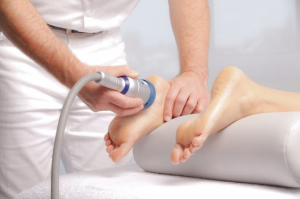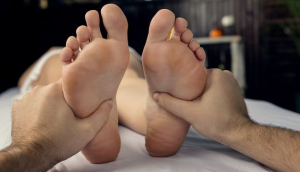Plantar Fasciitis Medical Devices
Plantar fasciitis is a common foot condition that causes pain in the heel and the bottom of the foot. Several medical devices and products are available to help alleviate plantar fasciitis symptoms. Plantar fasciitis can be an excruciating condition that affects your daily life. Fortunately, medical devices and podiatry innovations have relieved those suffering from this painful ailment. In this comprehensive guide, we will delve into the world of plantar fasciitis medical devices, explore how they work, and provide insights into selecting the right devices to manage and alleviate your discomfort effectively.
Understanding Plantar Fasciitis
Plantar fasciitis is the inflammation of the plantar fascia, a thick band of tissue that runs along the bottom of your foot, connecting your heel bone to your toes. This condition typically manifests as sharp, stabbing heel pain, especially during the first steps in the morning or after periods of inactivity. It’s important to note that the effectiveness of these devices can vary from person to person. The choice of device or treatment should be made in consultation with a healthcare professional, such as a podiatrist or physical therapist, who can assess the severity of your condition and provide personalized recommendations for managing and treating plantar fasciitis. Also, read about Skin Better Science | A Comprehensive Guide
How Plantar Fasciitis Medical Devices Work
Plantar fasciitis medical devices are designed to alleviate pain, support the arch of your foot, and promote healing. These devices typically function in the following ways:
Arch Support
Many medical devices provide targeted arch support, which helps distribute pressure evenly across your foot and reduces strain on the plantar fascia.
Cushioning
Cushioned insoles or inserts offer shock absorption, reducing the impact on your heel and minimizing discomfort while walking.
Night Splints
Night splints are worn while sleeping and maintain the foot in a dorsiflexed position, gently stretching the plantar fascia and preventing it from tightening overnight.
Heel Cups
Heel cups are designed to cradle the heel, providing cushioning and support, which can be especially helpful when dealing with heel pain.
Compression Socks
Compression socks can improve blood circulation and reduce inflammation, contributing to pain relief and healing.
The Benefits of Plantar Fasciitis Medical Devices
Using medical devices for plantar fasciitis offers a range of benefits:
Pain Relief
Medical devices can significantly reduce the pain associated with plantar fasciitis, making daily activities more bearable.
Improved Mobility
With reduced pain and proper support, you can walk and move more quickly, positively impacting your overall quality of life.
Accelerated Healing
Some devices, like night splints, promote healing by maintaining a gentle stretch on the plantar fascia.
Preventative Measure
These devices can prevent further damage and recurrence of plantar fasciitis, especially for individuals prone to the condition.

Medical devices
Here are some commonly used medical devices for this condition:
Orthotic Insoles: Orthotic insoles or shoe inserts are among the most common and effective instruments for plantar fasciitis. These insoles provide arch support and cushioning and help distribute the pressure on the foot more evenly. They can be custom-made by a podiatrist or purchased over the counter.
Night Splints: Night splints are designed to keep the foot in a dorsiflexed (toes pointed up) position overnight. This helps stretch the plantar fascia and Achilles tendon, reducing morning pain and stiffness.
Plantar Fasciitis Braces: These specialized braces provide targeted support to the arch of the foot and the plantar fascia. They are usually worn during the day and can be particularly helpful for those with severe symptoms.
Heel Cups or Cushions: Heel cups or cushions are inserts placed in the heel of the shoe to provide additional cushioning and shock absorption. They can help reduce pain during walking and other activities.
Strapping or Taping: Athletic tape or special strapping techniques can support the arch and relieve tension on the plantar fascia. A physical therapist or healthcare provider often does this.
Choosing the Right Plantar Fasciitis Medical Devices
Selecting the most suitable medical devices for your plantar fasciitis requires consideration of the following factors:
Severity of Your Condition
The severity of your plantar fasciitis may influence the type of device you need. Consult a healthcare professional for guidance.
Comfort and Fit
Ensure the device fits comfortably in your shoes and provides adequate support without causing discomfort or irritation.
Lifestyle and Activities
Consider your daily activities and lifestyle. Some devices may be more appropriate for active individuals, while others are designed for nighttime use.
Personal Preferences
Take into account your personal preferences when selecting a device. Some people may prefer insoles, while others find night splints more suitable.
Consult a Professional
Seek advice from a podiatrist or healthcare provider who can provide tailored recommendations based on your needs and condition.

Tips for Maximizing the Benefits
To make the most of your plantar fasciitis medical devices:
- Follow Instructions: Adhere to the usage instructions provided with your device for optimal results.
- Gradual Adaptation: Give your body time to adjust to the device, especially if it’s a new addition to your daily routine.
- Consistency: Use the device regularly and consistently to experience the best possible results.
Conclusion
Plantar fasciitis can be a painful and debilitating condition, but with the help of medical devices, relief is within reach. These innovative devices are designed to alleviate pain, provide support, and promote healing, allowing you to regain mobility and enjoy a pain-free life. Embrace the possibilities offered by plantar fasciitis medical devices, and take the first steps towards walking pain-free.
FAQs
Q1: How long can plantar fasciitis medical devices take to provide relief?
A1: The timeline for experiencing relief may vary depending on the severity of your condition and the type of device used. Some individuals may find replacement within days, while others may take several weeks.
Q2: Can I use multiple plantar fasciitis medical devices simultaneously?
A2: In some cases, combining multiple devices may provide enhanced relief and support. However, consulting a healthcare professional for guidance on connecting devices is advisable.
Q3: Do I need a prescription for plantar fasciitis medical devices?
A3: Many over-the-counter plantar fasciitis medical devices are available, but prescription options are also available for more severe cases. Consult a healthcare professional for personalized recommendations.
Q4: What are orthotic insoles, and how do they help with plantar fasciitis?
A: Orthotic insoles are specially designed shoe inserts that provide arch support and cushioning. They help distribute pressure evenly on the foot, reducing strain on the plantar fascia.
Q5: Are custom-made orthotic insoles necessary, or can I use over-the-counter ones for plantar fasciitis?
A: The choice between custom-made and over-the-counter orthotic insoles depends on the severity of your condition and your personal preferences.

